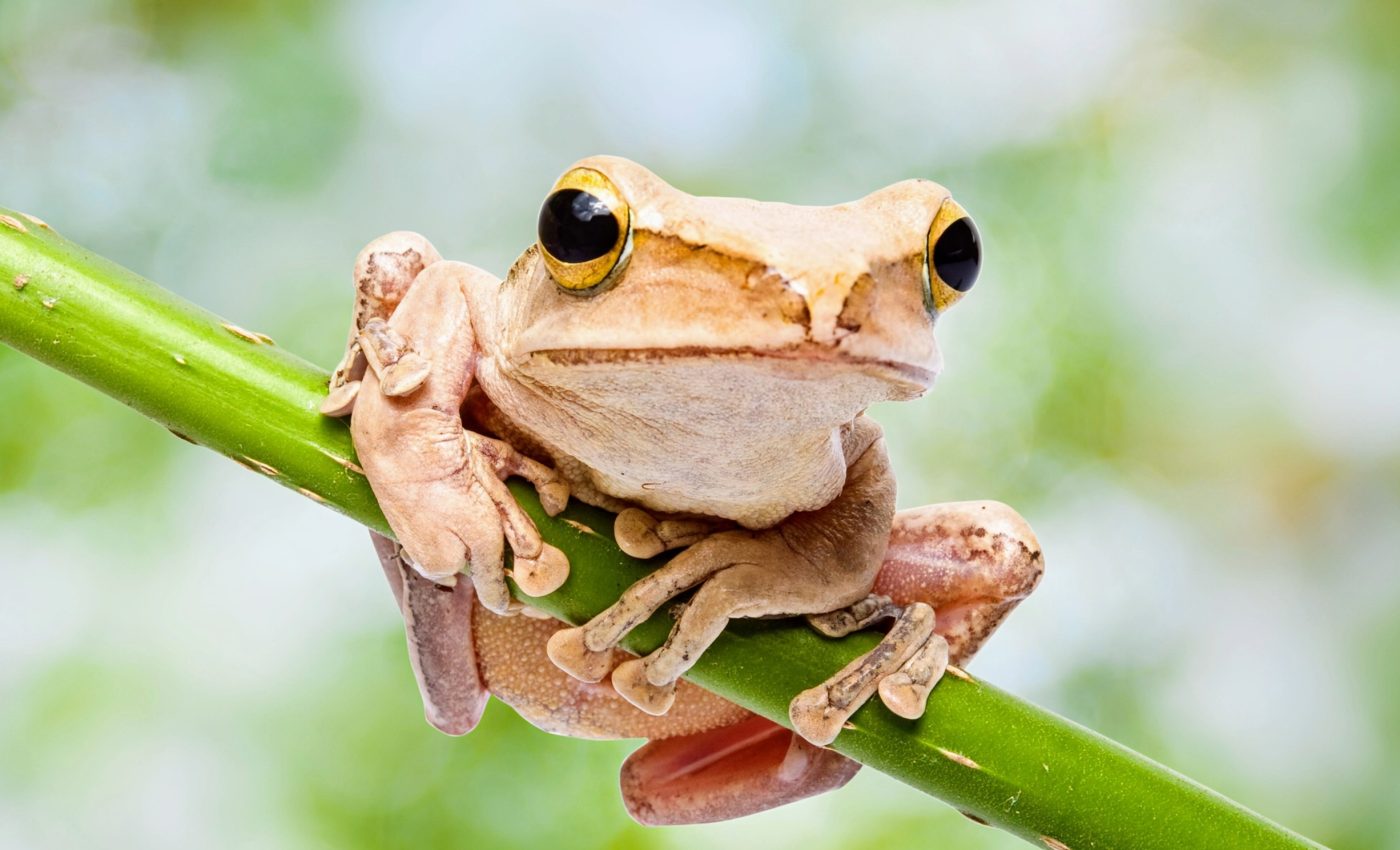
Common economic strategy could help save endangered frogs
A common investment strategy used in finance may hold the key to protecting an endangered frog species in Puerto Rico. The modern portfolio theory is a tool typically used to balance risk and reward in financial investments.
The research suggests that using this tool to guide natural resource managers in making decisions could help preserve the coquí llanero, Puerto Rico’s smallest and most endangered frog species.
Limited habitats for endangered frogs
The coquí frog is an iconic symbol of Puerto Rico, known for its distinct high-pitched chirp. Among the 17 species of coquí, the coquí llanero is the most at risk, with its population limited to just three small freshwater wetlands on the island’s northern coast.
This restricted habitat makes it highly vulnerable to environmental threats, including severe storms, rising sea levels, and the broader impacts of climate change.
“There’s only so much the coquí can do on their own to avoid climate risks,” said Mitch Eaton, lead author of the study and a research ecologist with the Southeast Climate Adaptation Science Center.
“So, it’s important that we think about how to manage and mitigate risk within this complex ecosystem.”
Reducing risks by diversifying investments
Modern portfolio theory, a concept rooted in economics, is widely used to build stable investment portfolios by balancing risks.
The idea is that diversifying investments – mixing high-risk, high-reward stocks with safer, low-return assets like bonds – can reduce overall risk in uncertain markets. The amount invested in each asset is based on how much risk the investor is willing to take.
But how does this financial theory apply to endangered frogs?
Making the best decisions for endangered frogs
In natural resource management, managers also face uncertainty about the future – especially when dealing with unpredictable climate conditions.
Like investors balancing a portfolio, managers must decide how to allocate resources by purchasing land for protection, restoring habitats, or relocating species to new environments.
In this study, researchers tested whether modern portfolio theory could be used to help managers make decisions that would best conserve the coquí llanero.
Managing risks with climate uncertainty
“Diversification of investments is kind of a magic bullet for stability under future market uncertainty,” Eaton said.
“The idea behind using modern portfolio theory is to manage risk under future climate uncertainty, and to help managers consider investments more carefully with realistic variables like budget constraints.”
To explore this idea, the researchers created models that incorporated various factors, such as currently protected habitats, projected sea-level rise, and future changes in temperature and precipitation.
The experts also accounted for different budget scenarios, simulating various levels of funding available to managers.
Maximizing benefits while minimizing risks
The models led to two different portfolio strategies. The first strategy aimed to maximize conservation benefits based on budget constraints.
The second strategy balanced potential benefits with reducing the risk of extinction, also considering available funding.
The results showed that maximizing benefits at the lowest cost often involved relocating frogs to already protected areas.
However, a strategy that focused on reducing risk suggested that buying new land to relocate the frogs – despite the higher cost – was a more effective way to minimize the chances of extinction.
The study concluded that relying solely on existing protected areas may not be enough to safeguard the coquí llanero from future climate risks and that investing in additional habitats could be worth the extra cost.
Expanding the distribution of endangered frogs
The research also revealed unexpected potential relocation sites for the frogs on Puerto Rico’s eastern side, far from the species’ current range on the northern coast.
This discovery could provide resource managers with more options for protecting the coquí llanero by expanding its geographic distribution.
“Ideally, modern portfolio theory acts as a handy tool for managers that gives them a new way of thinking about how to approach the implementation of management actions over space, in other words, how to pool their investments to manage risk and achieve maximal benefits,” Eaton said.
Broader implications of the study
While the study focuses on the coquí llanero, the researchers believe the approach could be applied to other species and environmental management challenges.
However, they noted two key limitations: the study only considered one species, and high-cost investments would require a more detailed evaluation of local conditions and the specific costs of conservation efforts.
Even with these limitations, the study, published in the journal Frontiers in Conservation Science, shows that modern portfolio theory has the potential to guide resource management for various species, helping managers make smarter, more strategic decisions in an increasingly uncertain world.
—–
Like what you read? Subscribe to our newsletter for engaging articles, exclusive content, and the latest updates.
Check us out on EarthSnap, a free app brought to you by Eric Ralls and Earth.com.
—–













